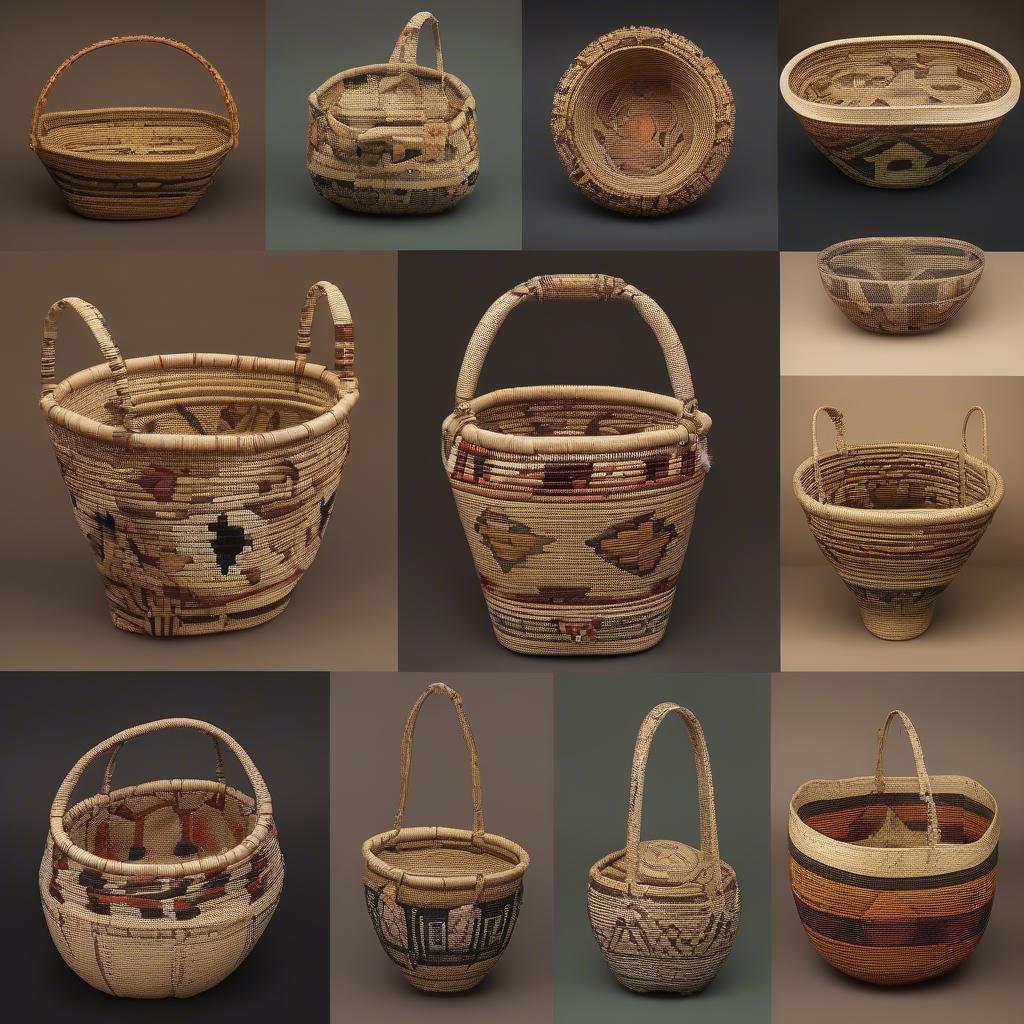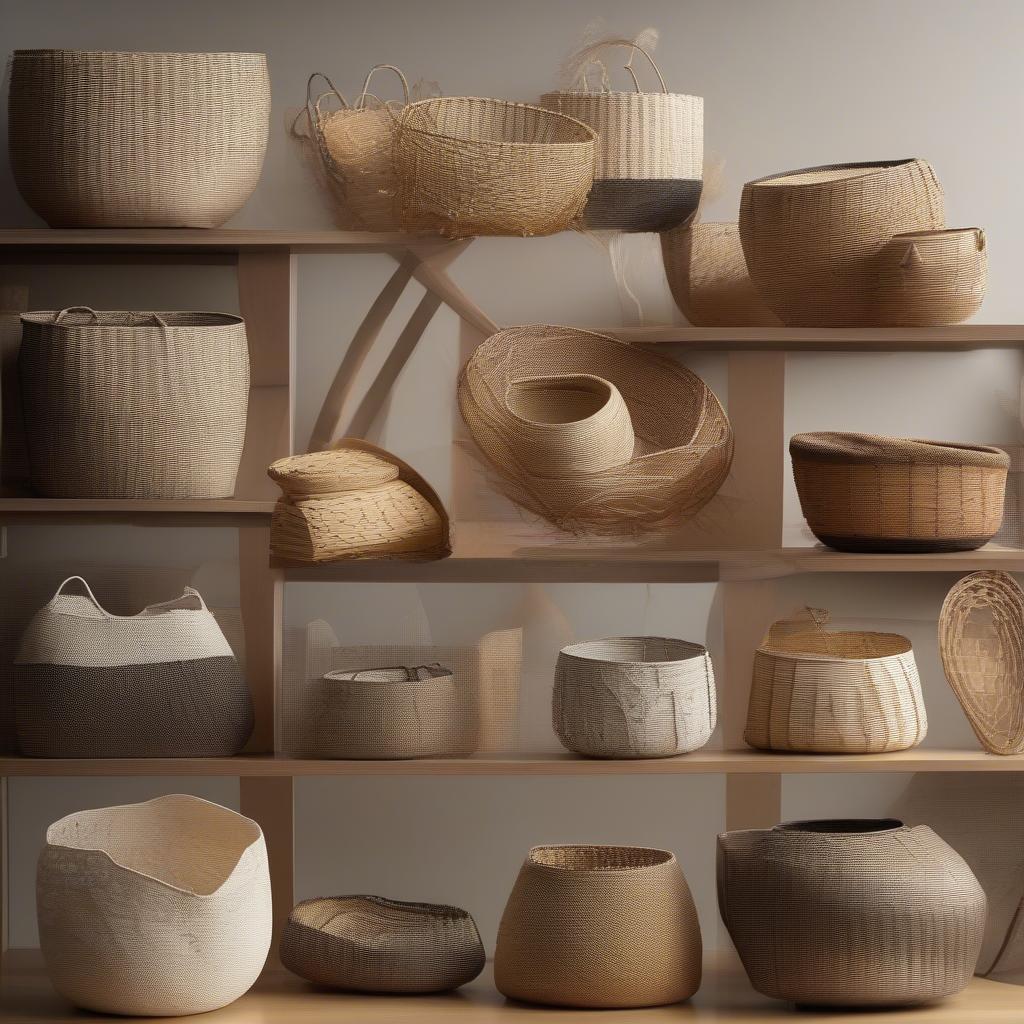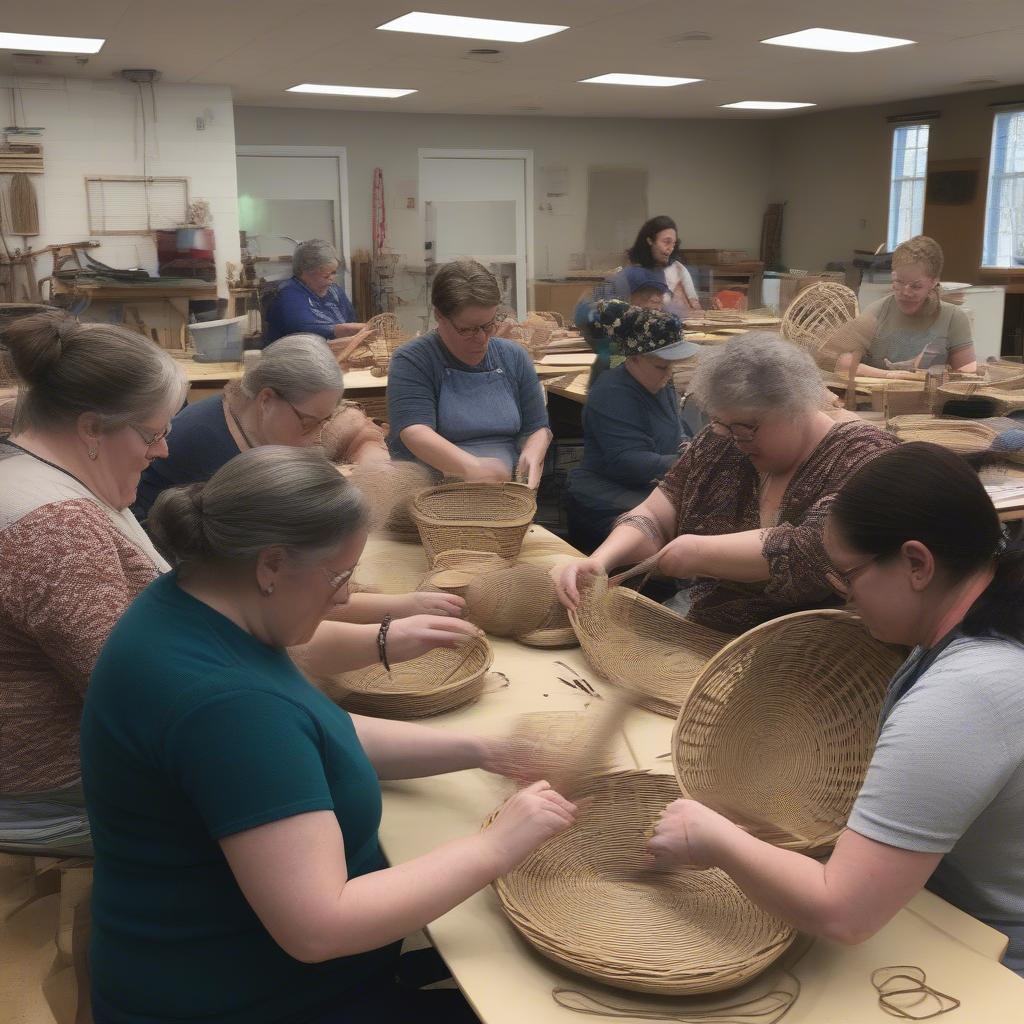Basket Weaving
Indiana Basket Weaving: A Rich Tradition of Craft and Creativity
Indiana Basket Weaving is a vibrant craft deeply rooted in the state’s history and natural resources. From the earliest Native American tribes to contemporary artisans, the art of basket weaving has been passed down through generations, evolving in style and technique while maintaining its core connection to nature and functionality. This article explores the history, techniques, and contemporary scene of Indiana basket weaving, offering a comprehensive guide for both enthusiasts and curious minds.
A Journey Through Time: The History of Indiana Basket Weaving
 Native American Basket Weaving in Indiana
Native American Basket Weaving in Indiana
Indiana’s basket weaving heritage begins with the indigenous peoples who inhabited the land long before European settlement. Tribes like the Miami, Potawatomi, and Shawnee relied on basketry for practical purposes, creating containers for gathering, storing, and transporting food, tools, and personal belongings. These early baskets were typically woven from readily available materials such as reeds, grasses, bark, and vines, reflecting a deep understanding of the local environment and its resources. The weaving techniques varied between tribes, each developing distinct styles and patterns that served as markers of cultural identity.
The arrival of European settlers brought new materials and influences, impacting the evolution of Indiana basket weaving. Traders introduced materials like willow and raffia, expanding the creative possibilities for local artisans. The exchange of knowledge and techniques between Native American weavers and European settlers led to the emergence of hybrid styles, blending traditional practices with new materials and designs.
Weaving Techniques: From Traditional to Contemporary
Basket weaving involves a variety of techniques, each resulting in unique textures and patterns. Traditional methods, such as twining, coiling, and plaiting, are still practiced today, often passed down through family lineages or community workshops. Twining involves interweaving two or more flexible elements around rigid vertical stakes, creating a strong and durable structure. Coiling, on the other hand, utilizes a foundation of bundled fibers wrapped and stitched together with a separate binding material. Plaiting is a simpler technique, often used to create flat mats or baskets with a more open weave.
 Contemporary Basket Weaving in Indiana
Contemporary Basket Weaving in Indiana
Contemporary basket weavers in Indiana continue to innovate, exploring new materials and designs while honoring the traditions of the past. Some artists incorporate unconventional materials like recycled plastic, metal wire, or even fabric into their work, pushing the boundaries of traditional basketry. Others experiment with new weaving patterns and shapes, creating sculptural and decorative pieces that transcend the purely functional.
Where to Experience Indiana Basket Weaving
Indiana offers a range of opportunities to learn about and appreciate the art of basket weaving. Several museums and cultural centers across the state showcase historical and contemporary basketry, providing insights into the craft’s evolution and cultural significance. Workshops and classes are also available for those interested in learning the techniques firsthand, offering a chance to connect with the rich heritage of Indiana basket weaving.
Finding Basket Weaving Classes in Indiana
Looking to learn this beautiful craft? Many community centers and art schools throughout Indiana offer basket weaving classes for all skill levels. A quick online search for “basket weaving classes near me” should provide a good starting point.
Visiting Museums with Basketry Collections
Several museums in Indiana feature impressive collections of Native American and historical baskets. These museums offer a glimpse into the rich history and artistry of Indiana basket weaving.
The Future of Indiana Basket Weaving
The future of Indiana basket weaving lies in the hands of the passionate individuals who continue to practice and evolve this timeless craft. By embracing both tradition and innovation, these artisans ensure that the legacy of Indiana basket weaving will continue to thrive for generations to come.
Conclusion
Indiana basket weaving is a testament to the enduring power of craft and creativity. From its Native American roots to its contemporary expressions, this vibrant tradition continues to inspire and connect people to the natural world and the rich cultural heritage of the Hoosier state. Exploring Indiana basket weaving offers a fascinating journey through time, technique, and artistry.
FAQs
- What are some common materials used in Indiana basket weaving? Traditional materials include reeds, grasses, bark, and vines, while contemporary weavers also use willow, raffia, recycled plastic, and metal wire.
- Where can I find basket weaving classes in Indiana? Many community centers and art schools offer classes. Search online for “basket weaving classes near me.”
- What Native American tribes practiced basket weaving in Indiana? Tribes like the Miami, Potawatomi, and Shawnee are known for their basketry traditions.
- Are there any museums in Indiana with basketry collections? Yes, several museums across the state showcase historical and contemporary baskets.
- What are some common basket weaving techniques? Twining, coiling, and plaiting are common techniques.
- How can I support Indiana basket weavers? Attend workshops, purchase their work, and visit museums showcasing their craft.
- What is the significance of basket weaving in Indiana’s history? Basket weaving reflects the resourcefulness and artistic traditions of both Native American and European settlers in the state.
 Indiana Basket Weaving Workshop
Indiana Basket Weaving Workshop
Need assistance? Contact us at Hanoi, Vietnam or Tech Avenue, Suite 12, San Francisco, CA 94105, USA. We have a 24/7 customer support team.
